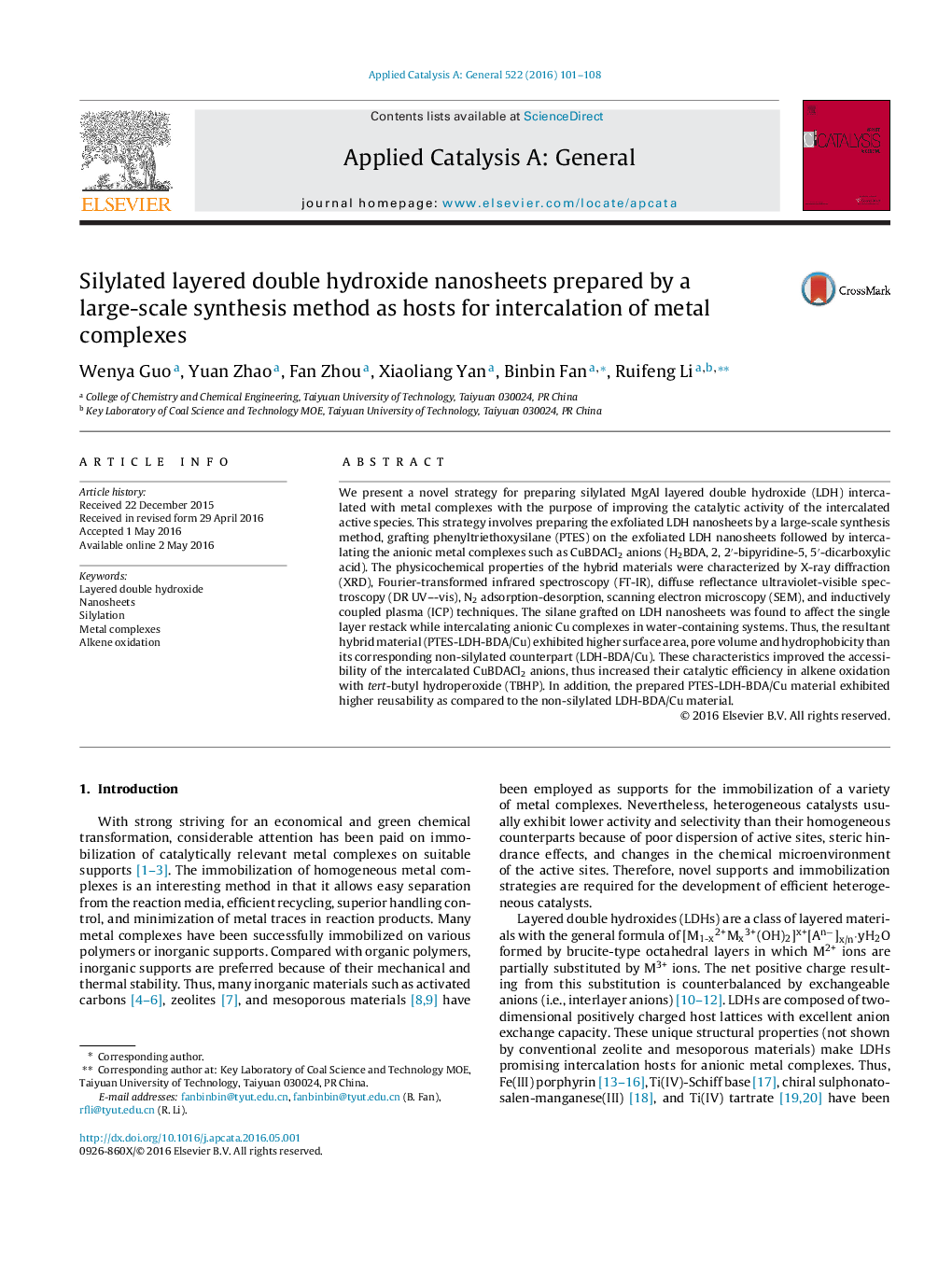| کد مقاله | کد نشریه | سال انتشار | مقاله انگلیسی | نسخه تمام متن |
|---|---|---|---|---|
| 38703 | 45788 | 2016 | 8 صفحه PDF | دانلود رایگان |
• LDH nanosheets were silylated and used as hosts for intercalation of active species.
• PTES-LDH-BDA/Cu exhibited higher surface area, pore volume and hydrophobicity than the non-silylated LDH-BDA/Cu counterpart.
• In alkene oxidation with TBHP, PTES-LDH-BDA/Cu exhibited higher catalytic efficiency and reusability than LDH-BDA/Cu.
• This work provides a new preparing method for heterogeneous catalysts based on LDHs.
We present a novel strategy for preparing silylated MgAl layered double hydroxide (LDH) intercalated with metal complexes with the purpose of improving the catalytic activity of the intercalated active species. This strategy involves preparing the exfoliated LDH nanosheets by a large-scale synthesis method, grafting phenyltriethoxysilane (PTES) on the exfoliated LDH nanosheets followed by intercalating the anionic metal complexes such as CuBDACl2 anions (H2BDA, 2, 2′-bipyridine-5, 5′-dicarboxylic acid). The physicochemical properties of the hybrid materials were characterized by X-ray diffraction (XRD), Fourier-transformed infrared spectroscopy (FT-IR), diffuse reflectance ultraviolet-visible spectroscopy (DR UV–-vis), N2 adsorption-desorption, scanning electron microscopy (SEM), and inductively coupled plasma (ICP) techniques. The silane grafted on LDH nanosheets was found to affect the single layer restack while intercalating anionic Cu complexes in water-containing systems. Thus, the resultant hybrid material (PTES-LDH-BDA/Cu) exhibited higher surface area, pore volume and hydrophobicity than its corresponding non-silylated counterpart (LDH-BDA/Cu). These characteristics improved the accessibility of the intercalated CuBDACl2 anions, thus increased their catalytic efficiency in alkene oxidation with tert-butyl hydroperoxide (TBHP). In addition, the prepared PTES-LDH-BDA/Cu material exhibited higher reusability as compared to the non-silylated LDH-BDA/Cu material.
Figure optionsDownload high-quality image (169 K)Download as PowerPoint slide
Journal: Applied Catalysis A: General - Volume 522, 25 July 2016, Pages 101–108
